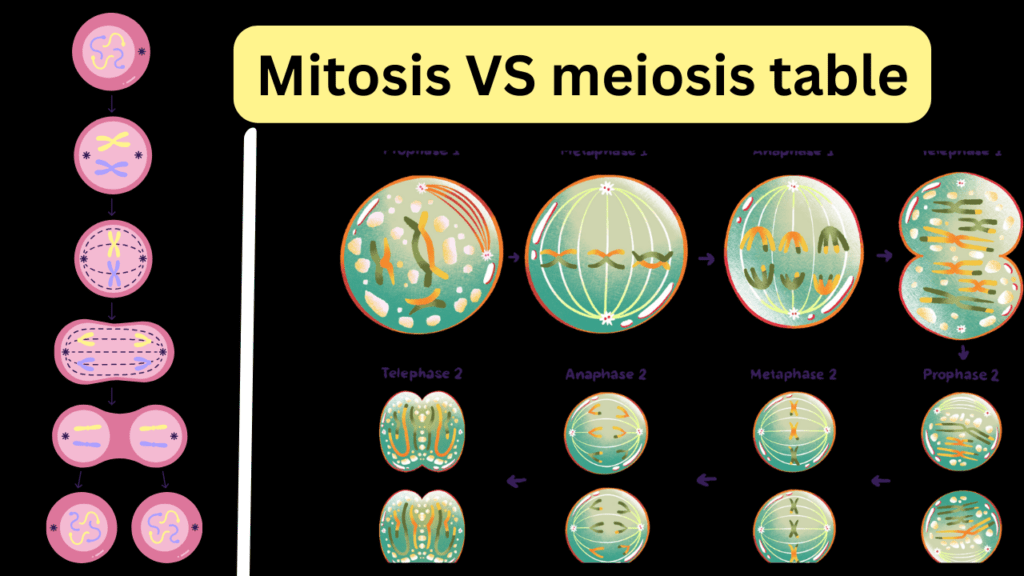Here’s the six main Differences between mitosis and meiosis in table from.
Key points in cell mitosis
- Mitosis results in two identical daughter cells.
- Essential for growth, tissue repair, and asexual reproduction.
- Stages: Prophase, Metaphase, Anaphase, and Telophase (PMAT).
- Chromosomes condense, align, separate, and move to opposite poles during mitosis.
- Two daughter cells are produced, both with the same chromosome number as the original cell (diploid).
- Genetic Identity: Daughter cells are genetically identical to the parent cell and to each other.
- It primarily occurs in somatic (non-reproductive) cells.
Key points in cell meiosis
- Meiosis results in four unique daughter cells.
- Primarily for the formation of gametes (sperm and egg cells) for sexual reproduction.
- Stages: Meiosis consists of two sequential divisions: Meiosis I and Meiosis II.
- Chromosomes undergo crossing over and independent assortment, contributing to genetic diversity.
- Four daughter cells are produced, each with half the chromosome number of the original cell (haploid).
- Genetic Diversity: Results in significant genetic variation due to processes like crossing over and random assortment.
- Chromosome number is halved, ensuring the restoration of the diploid state during fertilization.
- Occurs in Germ Cells: Meiosis occurs in the germ cells within reproductive organs, ensuring genetic diversity in offspring.
